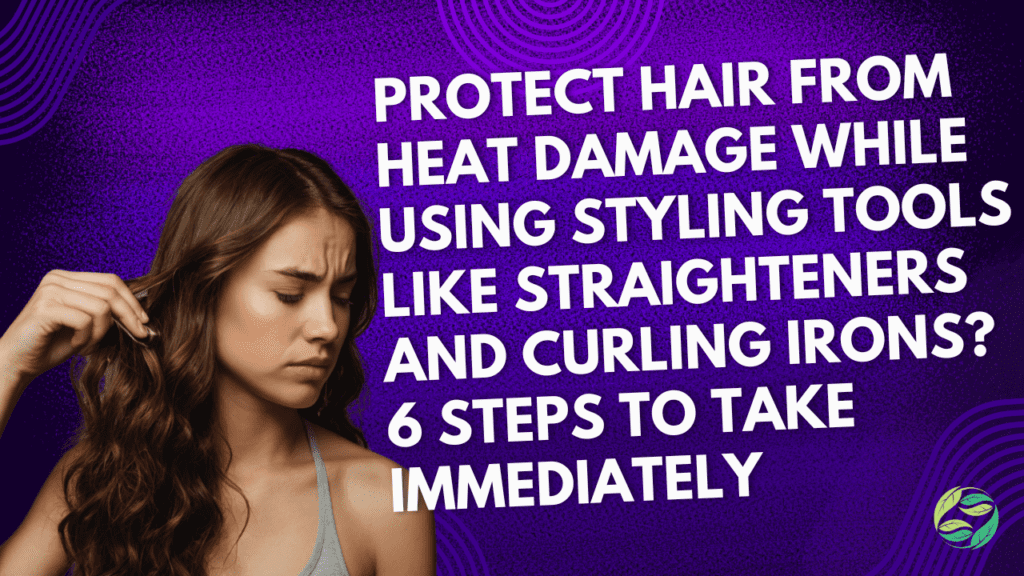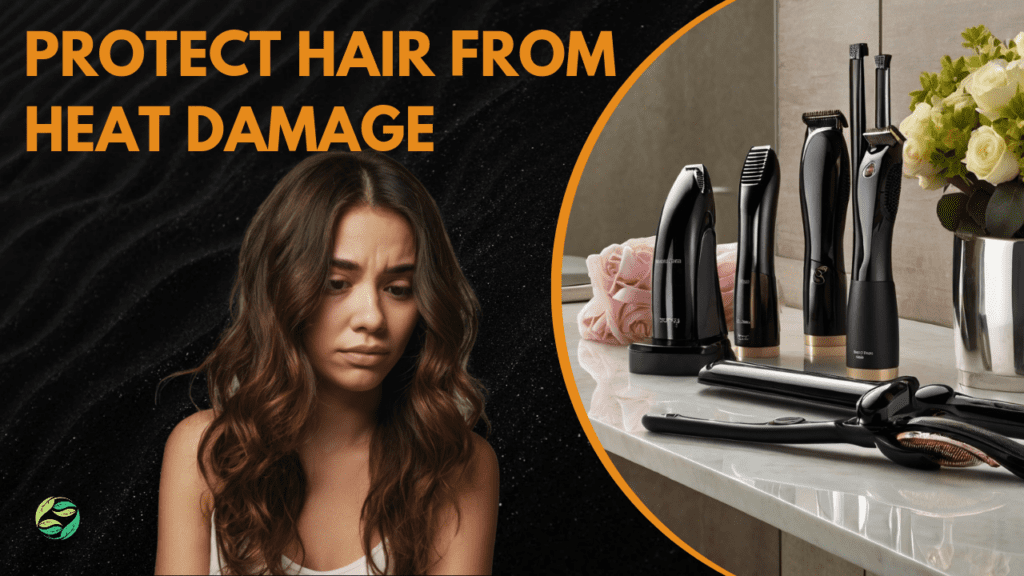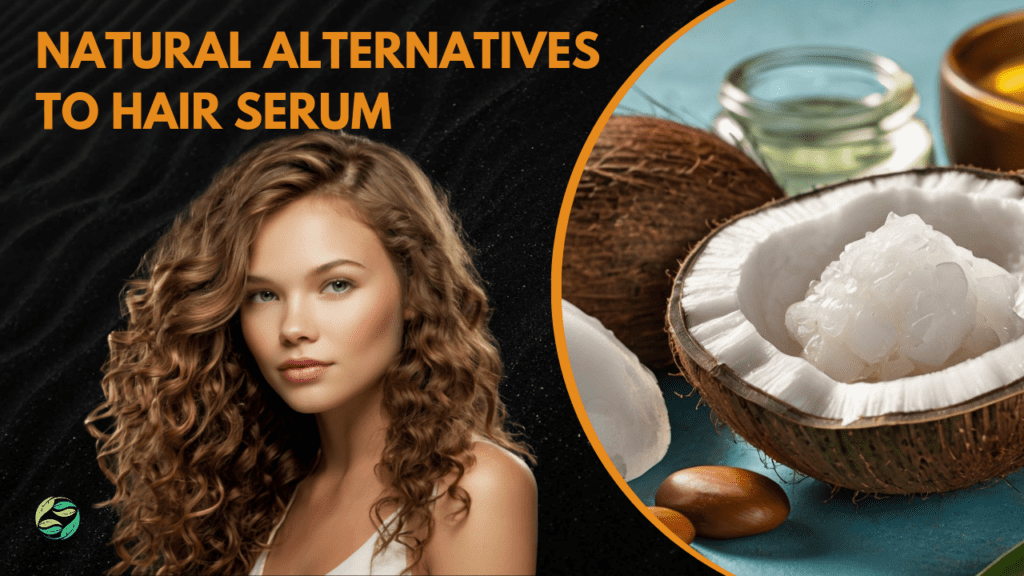As we all know, Heat damage is a common hair concern that can leave locks looking dull, brittle, and prone to breakage. Excessive exposure to high temperatures from styling tools like flat irons, curling irons, and blow dryers can strip the hair of its natural moisture, leading to a loss of elasticity and strength.

Protect hair from heat damage, which is very essential for maintaining its health and vitality. Healthy hair not only looks better but is also less likely to experience split ends, breakage, and other issues. By understanding the common causes of heat damage and implementing preventive measures, you can significantly reduce the risk of harming your hair and enjoy a lustrous, damage-free mane.
In this article, we will explore several strategies to protect hair from heat damage. We will discuss the importance of choosing the right styling tools, preparing your hair before styling, adjusting heat settings appropriately, minimizing styling time, and incorporating regular deep conditioning treatments. By following these guidelines, you can take proactive steps to safeguard your hair’s health and beauty.

Protect Hair from Heat Damage
1. Adjust Heat Settings
Setting your styling tool to the appropriate heat level is crucial for preventing damage. Fine or damaged hair may require a lower heat setting (around 250-300°F), while thicker, coarser hair can often tolerate higher temperatures (up to 400°F). Always start with a lower heat setting and gradually increase it if needed.
2. Consider Hair Type and Condition
Your hair type and condition should be the primary factors influencing your heat setting. Fine or damaged hair is more susceptible to heat damage, so it’s essential to use lower temperatures to prevent further harm. Thicker, coarser hair can often withstand higher heat settings, but it’s still important to avoid excessive exposure.
3. Experiment to Find the Optimal Temperature
The best way to determine the ideal heat setting for your hair is through experimentation. Start with a lower temperature and gradually increase it until you achieve your desired style. Pay attention to how your hair responds to different heat levels. If your hair becomes dry, brittle, or frizzy, you may be using too high a temperature.
4. Use a Heat Protectant
Applying a heat protectant spray or serum before styling can help to shield your hair from excessive heat damage. These products create a barrier between your hair and the styling tool, reducing the risk of dryness and breakage.
5. Minimize Styling Time
Excessive heat exposure can lead to significant damage, so it’s important to minimize styling time whenever possible. If you’re straightening your hair, try using a lower heat setting and running the iron through your hair only once or twice. Similarly, when curling, avoid holding the iron in place for too long.
6. Allow Hair to Cool Naturally
After styling, allow your hair to cool naturally before brushing or combing. This will help to set the style and reduce the risk of breakage.
Protect hair from heat damage is a Mantra for your daily life to follow forever and is truly essential for maintaining its health, vitality, and beauty. By following the guidelines outlined in this article, you can significantly reduce the risk of heat-related damage and enjoy a lustrous, damage-free mane.
Key points to remember include:
Choosing the right styling tools: Opt for ceramic or tourmaline-coated plates and tools with adjustable heat settings.
Preparing your hair: Ensure your hair is clean, dry, and protected with a heat protectant spray or serum.
Adjusting heat settings: Use the appropriate heat setting based on your hair type and condition.
Minimizing styling time: Avoid excessive heat exposure by styling quickly and efficiently.
Regular deep conditioning: Replenish moisture and repair damage with deep conditioning treatments.
Avoiding over-styling: Give your hair a break from heat styling whenever possible.

Natural Alternatives to Hair Serum
The Main thing to Protect Hair From Heat Damage is done but We can also take a step further. Hair serums are often used to add shine, smoothness, and protection to the hair. While many commercial serums contain synthetic ingredients, there are plenty of natural alternatives that can provide similar benefits. Here are some popular options:
Oils
Coconut Oil:
This versatile oil is rich in fatty acids that can help to moisturize and strengthen hair. It does help in reduction of frizz and add shine.
Argan Oil:
Known for its high content of fatty acids and antioxidants, argan oil can help to repair damaged hair and improve its elasticity.
Jojoba Oil:
This oil is similar in structure to the natural oils produced by your scalp, making it a great option for those with dry or flaky skin. Jojoba oil can help to balance scalp moisture and promote healthy hair growth.
Olive Oil:
Olive oil is a classic beauty ingredient that can help to nourish and condition hair. It can also help in reducing frizz and helps to add shine.
Aloe Vera Gel
Aloe vera gel is a natural humectant that can help to hydrate and soothe the scalp. It can provide reduction in inflammation and promote healthy hair growth.
Honey
Honey is a natural humectant that can help to lock in moisture and add shine to the hair. It can also help to soften hair and reduce frizz.
Apple Cider Vinegar
Apple cider vinegar can help to balance the pH of your scalp, which can promote healthy hair growth and reduce dandruff. It certainly helps to add shine and provide reduction in frizz.
When using natural hair serums, it’s important to choose the right oil or ingredient for your hair type and concerns. You can also create your own DIY serum by combining several natural ingredients.
Remember to patch test any new product before applying it to your entire head to ensure you don’t have any allergic reactions. And you’re all set.
Using Minoxidil for Women: A Safe and Effective Approach 2024
FAQs
Q. Can I use a heat protectant spray or serum on wet hair?
A. While it’s possible to apply a heat protectant to wet hair, it may not be as effective. Wet hair is more porous, and the heat protectant may not penetrate the strands as deeply. For optimal protection, apply the heat protectant to damp hair after towel-drying it.
Q. How often should I deep condition my hair to protect it from heat damage?
A. Deep conditioning your hair once a week is generally recommended. However, if your hair is particularly damaged or dry, you may benefit from more frequent deep conditioning treatments.
Q. Are there any natural alternatives to heat protectant sprays and serums?
A. Yes, there are several natural alternatives to commercial heat protectants. Coconut oil, argan oil, and aloe vera are all excellent options. These ingredients can help to hydrate and nourish your hair, providing some protection from heat damage.
Q. Can I use a flat iron or curling iron every day?
A. While it’s possible to use styling tools every day, it’s not recommended. Excessive heat exposure can lead to significant damage, so it’s important to give your hair a break whenever possible. Try to air-dry your hair or style it with minimal heat at least a few days a week.
Q. How can I tell if my hair is damaged from heat styling?
A. Signs of heat damage include dryness, brittleness, split ends, and breakage. If you notice any of these symptoms, it’s important to take steps to protect your hair from further damage. This may involve reducing your use of styling tools, deep conditioning regularly, and avoiding excessive heat exposure.

Every word you write sparkles with insight, like stars in my night sky. Can’t wait to navigate more skies together.
I’m amazed by the depth and breadth of The knowledge. Thanks for sharing!
The clarity of The writing is like a perfectly tuned instrument, making hard to understand melodies seem effortless.
Breaking down this topic so clearly was no small feat. Thanks for making it accessible.
I loved as much as youll receive carried out right here The sketch is tasteful your authored material stylish nonetheless you command get bought an nervousness over that you wish be delivering the following unwell unquestionably come more formerly again since exactly the same nearly a lot often inside case you shield this hike
Technology us I appreciate you sharing this blog post. Thanks Again. Cool.
Amazed by The knowledge breadth, or what I’ve been mistaking for just good Googling skills.
You tackled a hard to understand issue with elegance and insight. I feel much more informed after reading The post.
The hard work you put into this post is as admirable as The commitment to high quality. It’s very attractive.
The article was a delightful read, and The passion shines as brightly as The intellect. Quite the combination!
Making hard to understand topics accessible, you’re like the translator I never knew I needed.